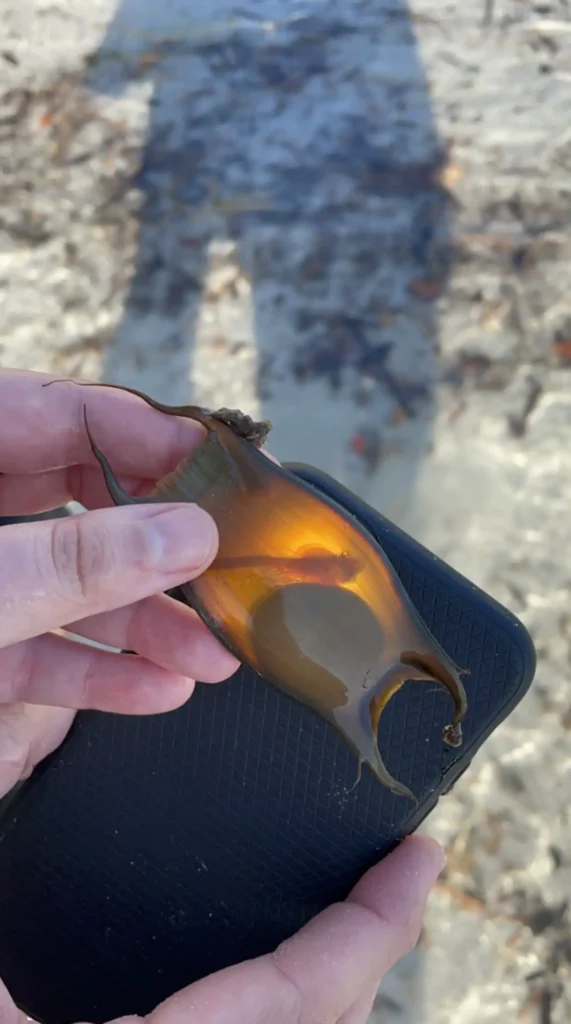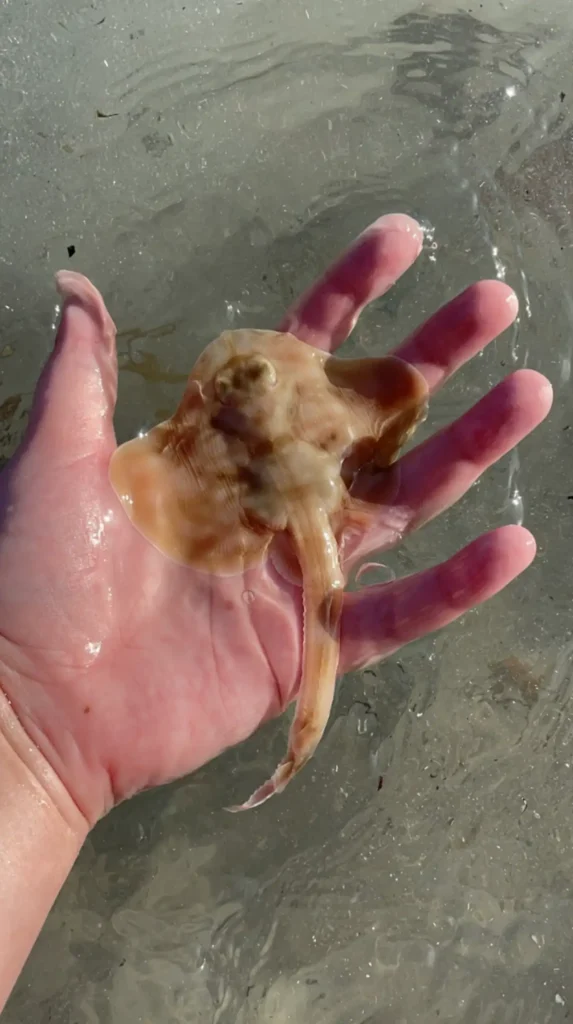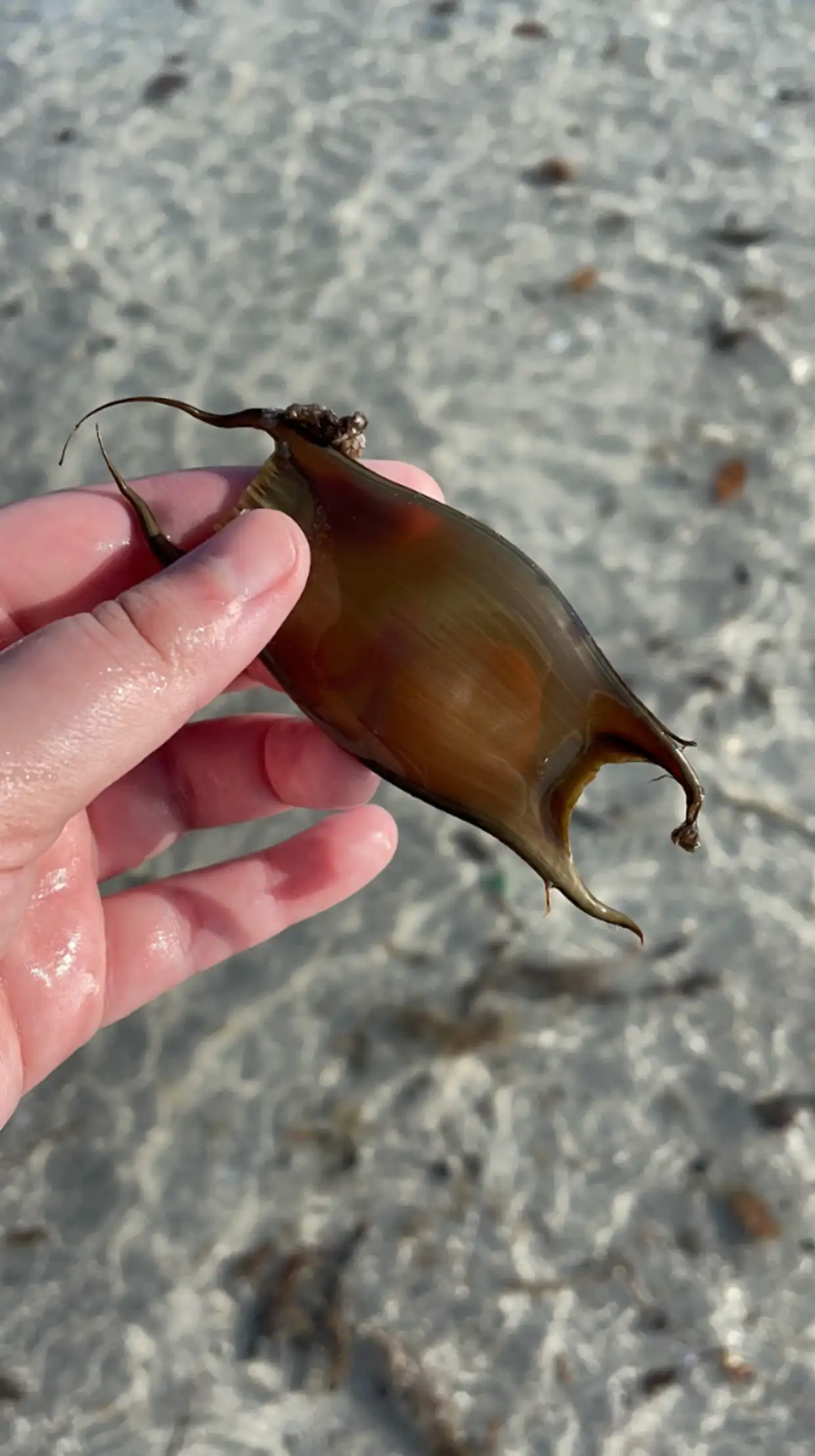“I was like, ‘What am I even looking at?’”
Last year, wildlife photographer Brianna Varner and her boyfriend took a walk along Florida’s Pass-a-Grille Beach, hoping the recent storms might have uncovered something interesting. As they scanned the sand for natural treasures, Varner picked up what looked like a dried leaf nestled among the debris.
“I was just kind of staring at it, and I was like, ‘This is kind of weirdly shaped,’” she told The Dodo.
On closer inspection, she realized it wasn’t a leaf at all — it was a mermaid’s purse, the nickname for the protective casings that hold shark, stingray, and skate embryos. These egg cases are usually deposited underwater and anchored to the sea floor, where they remain until the embryo is ready to hatch.

Varner assumed the case was empty, as most found onshore already have hatched. But something about this one felt different — rounded, sealed at both ends. Curious, she held it up to the sun, and what she saw stopped her in her tracks.
“There was a little embryo in it,” she said.
Knowing the tiny life inside wouldn’t survive if the egg dried out in the sun, Varner gently tucked it into a nearby tide pool, giving it a chance to continue developing in a safe, moist environment.
As she continued walking the beach, Varner found six or seven more mermaid’s purses, carefully placing each one in a tide pool. But one stood out — it felt firmer, heavier. When she tried to shine light through it, nothing passed through.
As she carried the unusual case toward the water, Varner suddenly felt it move. She looked down — and there, peeking through the case, was a tiny mouth.

“I was like, ‘What am I even looking at?’” she recalled.
In that moment, the baby inside began to hatch — right in her hands. Within seconds, the tiny creature emerged completely, wriggling and ready to swim. To protect it from the choppy surf, Varner waded into deeper water and gently released it.
“[It] just immediately dropped to the sand, which is exactly what its instincts would be telling it to do,” she said. “It was a really cool moment where I was like, ‘Oh my God. I think it’ll be OK.’”
Later, Varner identified the hatchling as a clearnose skate. Witnessing its very first moments of life left her in awe — and she kept the empty egg casing as a memento of the unforgettable experience.
Varner hopes her story reminds beachgoers to treat unfamiliar objects with curiosity and care.
“There’s a lot of things that are on beaches that we don’t realize are alive or important,” she said.
